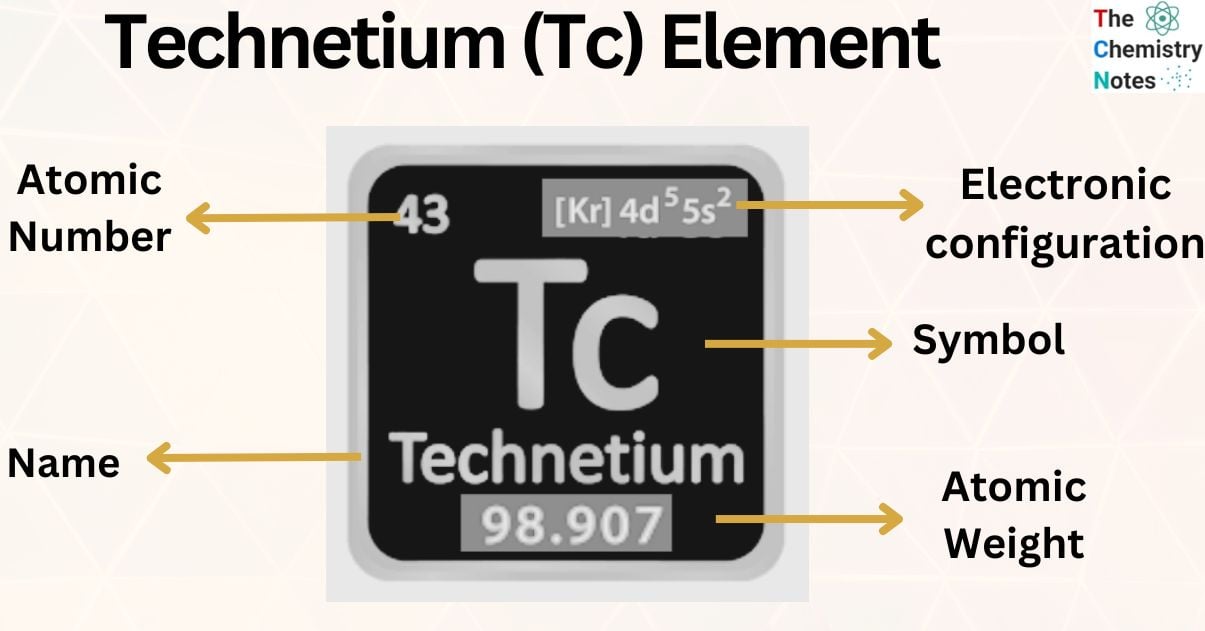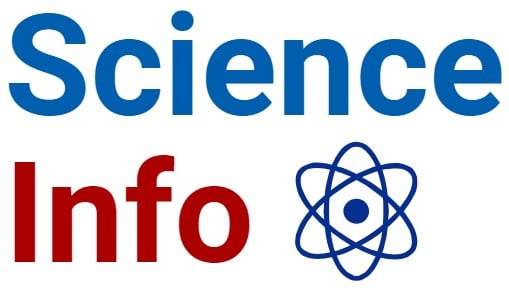Technetium is a metallic element with the atomic number 43 and is represented by the symbol ‘Tc’ in the periodic table. It is classified as a transition metal and belongs to the d-block of group 7 of the periodic table. It is the lightest element with all allotropes being radioactive.
Technetium is a silvery-gray radioactive metal that looks similar to platinum and is commonly extracted as a gray powder.It is a rare element that is produced as a result of fusion.

Interesting Science Videos
History of Technetium
- Russian chemist Dmitri Mendeleev first predicted the existence of technetium in 1871. He identified a gap
- In 1925, a group of German chemists, Ida Tacke, Otto Berg, and Walter Noddack, in Berlin claimed that they had discovered element 43 after a number of tests were performed on platinum ores and columbite minerals. between manganese and ruthenium and termed it eka-manganese.
- Carlo Perrier, an Italian chemist, and Emilio Segre, an Italian American physicist discovered it in 1937. Technetium was generated by impacting molybdenum atoms with deuterons propelled by a cyclotron device.
- The term ‘technetium’ is derived from the Greek word ‘technètos,’ which means “artificial.”
Occurrence of Technetium
- Technetium is one of the rarest elements on Earth. Its presence on the Earth’s crust is estimated to be only 0.003 parts per trillion.
- Technetium is found naturally on Earth only in uranium ores because of spontaneous fission; the levels are minute but have been quantified.
- Technetium was previously assumed to exist only in laboratory samples. Its spectral lines, however, have now been observed in red giant stars such as Betelgeuse.
- The radioactive isotope technetium-99 can be created from uranium nuclear reactor waste.
Isotopes of Technetium
Technetium does not have naturally stable isotopes.
Elemental Properties of Technetium
| Electronic Configuration | [Kr] 4d5 5s2 |
| Atomic Number | 43 |
| Atomic Weight | (99) g mol -1 |
| State at 20°C | Solid |
| Group, Period, and Block | 7, 5, d-block |
| Density | 11.5 g.cm-3 at 20°C |
| Van der Waals radius | 0.128 nm |
| Electron shells | 2, 8, 18, 14, 1 |
| Electrons | 43 |
| Protons | 43 |
| Neutrons in most abundant isotope | 55 |
Physical Properties of Technetium
- Technetium is a silvery-gray radioactive element.
- Technetium has a melting point of 2430 K (2157 °C) and a boiling point of around 4538 K (4265 °C).
- Its density is 11.5 grams per cubic centimeter.
- Technetium is good electric and thermal conductor.
- It can be an excellent superconductor at temperatures of -262.15 °C and below.
- It is slightly para magnetic.
| Color/physical appearance | silvery-gray |
| Melting point/freezing point | 2430 K, 2157 °C, 3915 °F |
| Boiling point | 4538 K, 4265 °C, 7709 °F |
| Density | 11.5 (g cm−3) |
| Malleability | Yes |
| Ductility | Yes |
| Electronegativity | 1.9 (Pauling Scale) |
Chemical Properties of Technetium
- In a powdered state, it ignites with oxygen, resulting in heptoxide (Tc2O7).
- Technetium dissolves in nitric acid and concentrated sulfuric acid but is not soluble in hydrochloric acid of any strength.
Chemical Reaction of Technetium
- The Reaction of Technetium with Air
It tarnishes very slowly in wet air. In reality, technetium is often distributed as a powder or a sponge, and it is significantly more reactive in this form. When heated with oxygen, technetium (VII) oxide (technetium heptoxide, Tc2O7) is formed.
4 Tc (s) + 7 O2 (g) → 2 Tc2O7 (s)
- The Reaction of Technetium with Water
Technetium does not react with water under normal conditions.
- The Reaction of Technetium with the Halogens
When heated with fluorine, the result is a mixture of technetium (VI) fluoride (technetium hexafluoride, TcF6) and technetium (VII) fluoride (technetium heptafluoride, TcF7).
Tc (s) + 3 F2 (g) → TcF6 (s)
2 Tc (s) + 7 F2 (g) → 2 TcF7 (s)
- The Reaction of Technetium with Acids
technetium is insoluble in hydrochloric acid (HCl) and hydrofluoric acid (HF). It does dissolve in nitric acid, HNO3, or concentrated sulphuric acid, H2SO4, both of which are oxidizing, to form solutions of pertechnetic acid, HTcO4. In this form, the technetium is in the formal +7 oxidation state.
Uses of Technetium
- Technetium helps to protect steel from corrosion as it is corrosion-resistant.
- Technetium-99m is among the most valuable isotopes of technetium because it has a short half-life and chemically interacts with many biologically active substances; these features make it excellent for many medical radioactive isotope tests.
- When Tc-99m is coupled with a tin compound, it clings to red blood cells and can therefore be used to map circulatory disorders.
- Tc-99m’s pyrophosphate ion binds to calcium deposits in injured heart muscle, making it effective for assessing damage after a heart attack.
- Tc-99m allows imaging of the organ’s anatomy, such as the spleen.
Health Effects Of Technetium
- Technetium has no natural biological function and is not found in the human body.
- The technetium isotopes must be handled with caution. When dealing with technetium, the greatest concern is dust inhalation; such radioactive contamination in the lungs can represent a high cancer risk.
Environmental Effects Of Technetium
Nuclear fission produces a large amount of technetium, which spreads more easily than many other radionuclides. It appears to be chemically non-toxic.
References
- W. M. Haynes, ed., CRC Handbook of Chemistry and Physics, CRC Press/Taylor and Francis, Boca Raton, FL, 95th Edition, Internet Version 2015, accessed December 2014.
- John Emsley, Nature’s Building Blocks: An A-Z Guide to the Elements, Oxford University Press, New York, 2nd Edition, 2011.
- Hammond, C. R. (2004). “The Elements”. Handbook of Chemistry and Physics CRC press. ISBN 978-0-8493-0485-9.
- https://www.rsc.org/periodic-table/element/43/technetium
- https://www.britannica.com/science/technetium
- Cotton, F. A.; Wilkinson, G.; Murillo, C. A.; Bochmann, M. (1999). Advanced Inorganic Chemistry (6th ed.). New York: John Wiley & Sons, Inc. ISBN 978-0-471-19957-1.
- https://www.lenntech.com/periodic/elements/tc.htm
- https://www.sciencedirect.com/topics/physics-and-astronomy/technetium
- https://www.epa.gov/radiation/radionuclide-basics-technetium-99

